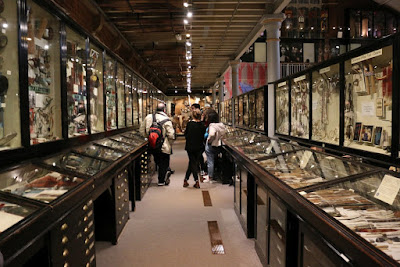The walk then followed a tree lined path beside a steam or ditch. The air was crowded with small flies and midges, a sign that Spring had arrived. Birds sang and could enjoy the easy pickings of so much food .
We crossed a wooden footbridge beside a screen of poplars.
Then followed the Thames Path back through St John's Lock, the highest lock on the River Thames, where a statue of Father Thames lay without the expected trident but with a plastic paddle.
The ground was soft and the driest place to walk was near the bank of the River Thames where we passed several fishermen. The spire of St Lawrences could be seen across the even land.
I wondered whether it was the same St Lawrence that I knew from Caterham Surrey. There are a number of St Lawrences: Saint Lawrence (d. 258), the Christian martyr, after whom all others are named; Saint Laurence of Canterbury (d. 619), second Archbishop of Canterbury... (wikipedia)
We walked under the footpath arch next to the Halfpenny Bridge, so called because until the town's people protested and got their way, a half penny was charged for going over the bridge.
Back in Lechlade I took a picture of the Christmas Shop. It is open all year round, but was closed when we went by. The business first started in 1985, selling traditional German Christmas products. Nearby in the post office there were some knitted decorations and ornaments for sale - some of those for Christmas. Christmas all year round could be an eccentricity of Lechlade.
We went inside St Lawrence's Church where there was an interesting painting 'Presented to Brigadier John Cooper by the congregation in gratitude for his ministry - August 2010'. We visited the Londis store where there were plenty of toilet rolls available. Abingdon has run out due to Coronavirus panic buying. Some locals had a broad Gloucestershire accent. In the community library was an information centre where we learned more about Lechlade from the friendly volunteers. We had some excellent soup and sourdough bread at Lynwood & Co. There was a good antique shop and a hall given over to antiques. The lady at the desk was coughing so we did keep our distance.
I read Shelley's poem when I got home. It describes the coming of night in the churchyard:
...Thus solemnized and softened, death is mild
And terrorless as this serenest night...

























